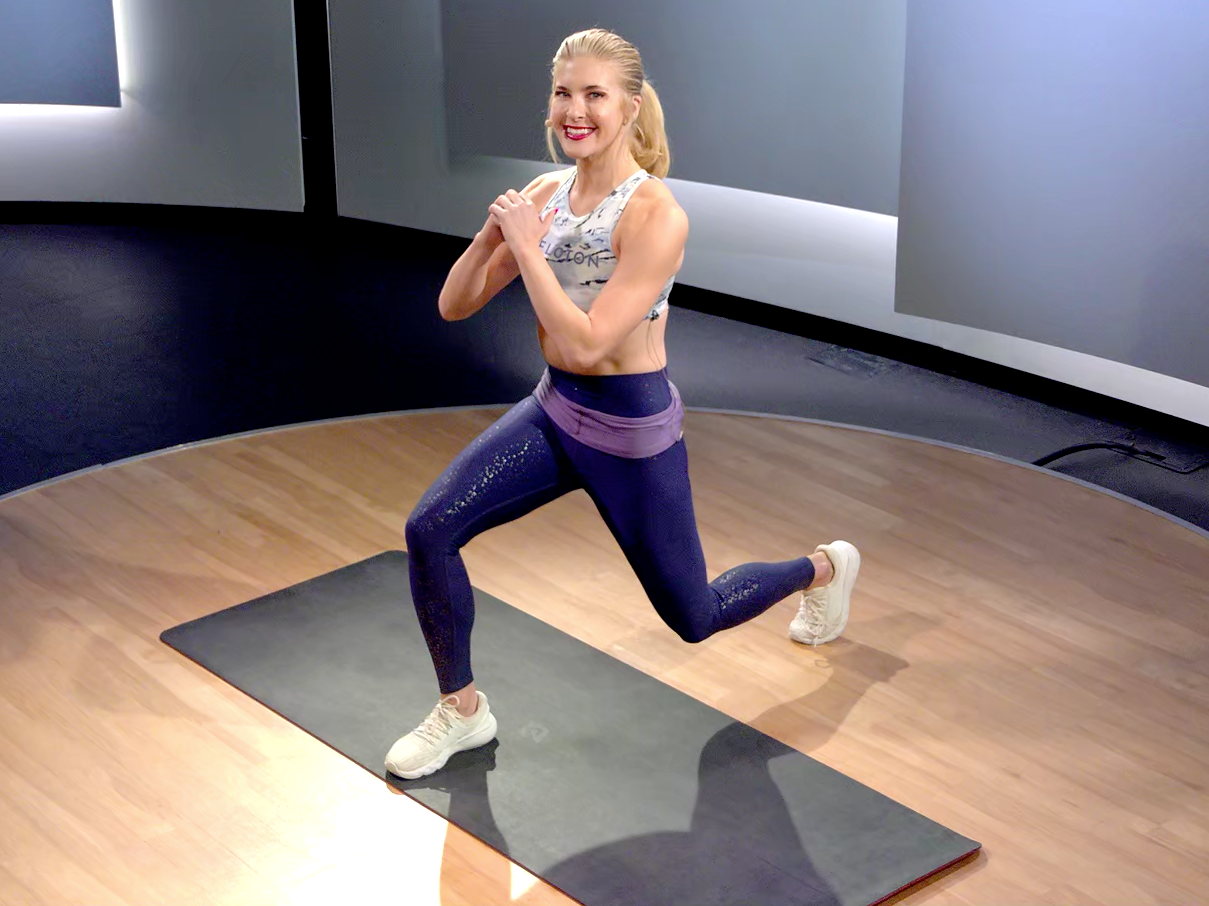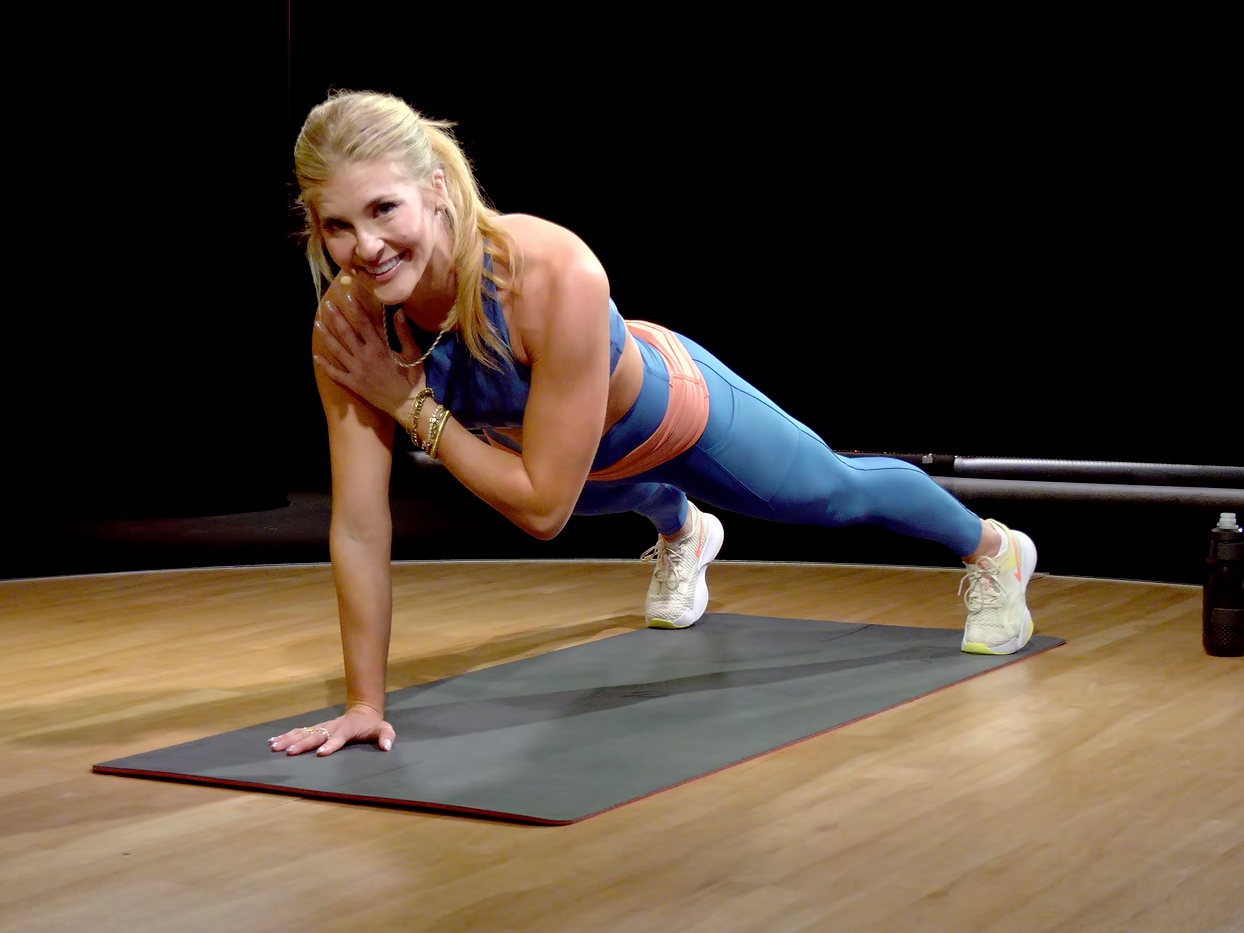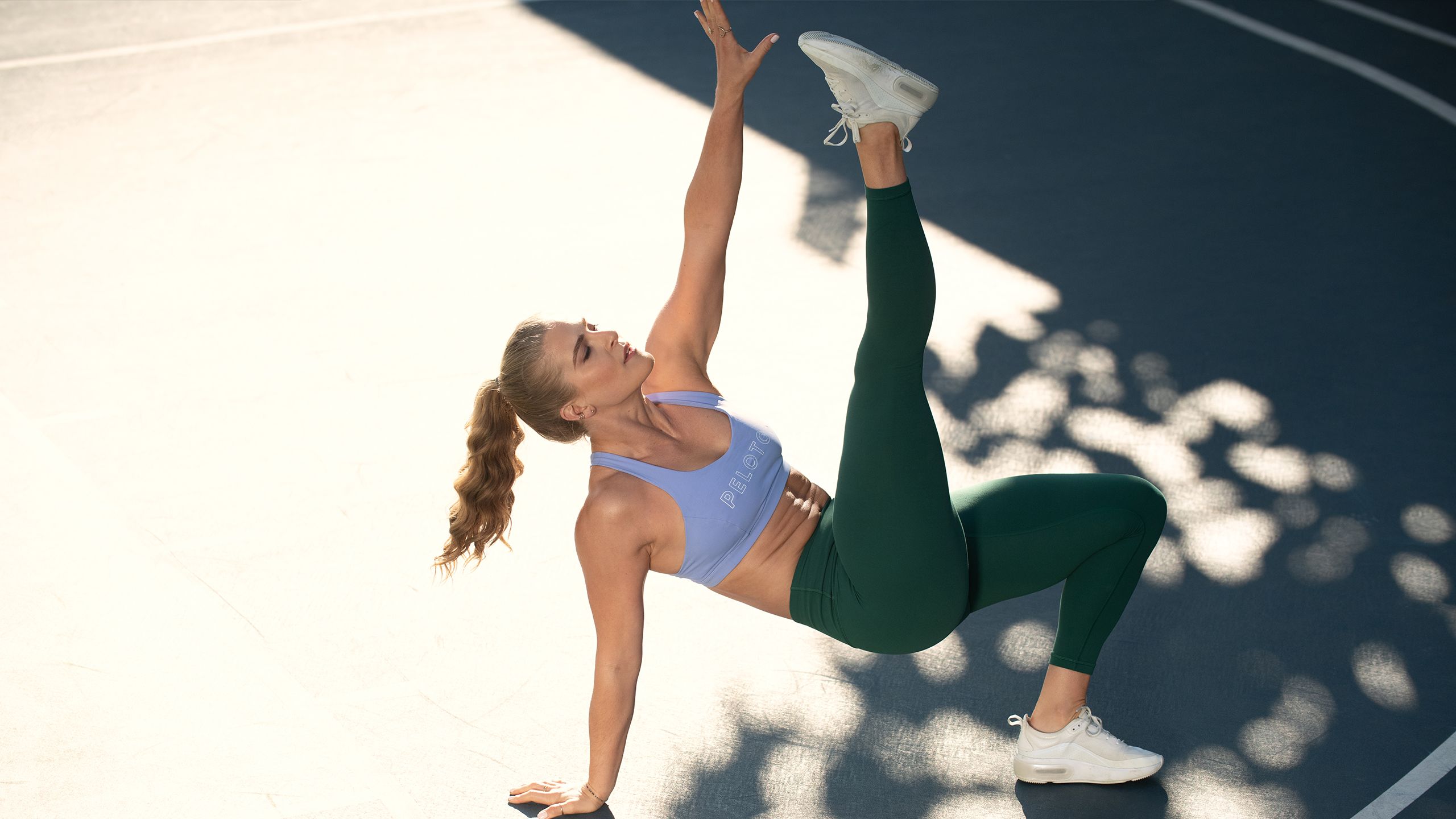What Is Bodyweight Training?
Does Bodyweight Training Work?
Who Should Try Bodyweight Training?
The Benefits of Bodyweight Training
Whether you’re traveling or looking for a quick endorphin boost, sticking to your fitness routine sans-equipment can be stressful. Luckily, it’s easy to stay on track toward your workout goals without so much as a set of dumbbells.
That’s right: Bodyweight exercises offer a number of benefits, including helping you maintain your fitness without any equipment whatsoever. With the right approach, you can even make some gains using only your body as your gym.
Here’s what you should know about the benefits of bodyweight exercises.
What Is Bodyweight Training?
Bodyweight training is any movement that can be done without extra equipment—no resistance bands, no dumbbells, no cardio equipment. Nothing but you. The idea is that you use your own body to create resistance against gravity. For example, a bodyweight push-up involves pressing your own weight against the pull of gravity. Similarly, a bodyweight squat pushes your feet into the earth to propel your body upward.
Now, don’t get us wrong—we love weights, too. They’re a great and necessary part of a strength training routine. But if you lack specialized gym equipment, it’s still possible to challenge and reward your body.
Bodyweight exercises allow us to get back to basics and challenge ourselves in different ways. They create a physically challenging and mentally stimulating workout that you’ll return to again and again.
Does Bodyweight Training Work?
If you’ve always assumed lifting weights is the only way to have a serious workout, you’re sorely mistaken. Research has proven the many benefits of bodyweight exercises, including improved cardio fitness and increased muscle mass. One study found that, over the course of ten weeks of bodyweight training, young women improved in seven out of nine physical fitness parameters. The most notable gains were in aerobic capacity, muscular endurance, and flexibility.
And yes, bodyweight exercises can be as effective as lifting weights—but you have to program your bodyweight training effectively. Increase the difficulty of each movement as your body adapts to the new challenge. Add more reps, change your tempo, pulse, or even add a plyometric movement. (Think: squat jumps instead of regular squats.)

Who Should Try Bodyweight Training?
Besides everyone, you mean? Bodyweight training can be effective for every fitness level, from beginner to advanced. But a few groups may see the benefits more quickly than others.
One such group is people who are totally new to working out. Bodyweight movements are essential for fitness newbies to nail their form and practice important cues like engaging the core. Without any equipment to worry about, you can focus on building a strong foundation for your exercise journey.
If you’re a little intimidated at the thought of working out at a gym or a studio with other people around, tackle bodyweight exercises at home until you feel confident. Plus, you won’t feel compelled to lift a certain amount of weight, which could potentially injure you (especially if you’re not totally sure what you’re doing or you’re not working with a personal trainer who can guide you).
A study from the International Journal of Exercise Science focused specifically on participants who were inactive, and the authors found that simple bodyweight training (requiring only 11 minutes of exercise three times a week for six weeks and no specialized equipment) was enough to increase participants’ VO2 max and max power output significantly, when compared to the non-exercising control group.
For similar reasons, people recovering from injuries or in physical therapy can also benefit from bodyweight exercises. Again, the focus on form is key, especially when you’re trying to correct muscle imbalances (a major cause of injury, as research shows). Bodyweight training offer you the freedom and flexibility to maintain your fitness levels without overdoing it and potentially reinjuring yourself.
Finally, older adults can benefit from bodyweight training, especially to reduce muscle loss from aging. Reminder: Muscle mass decreases a ton as you age, especially after the age of 60, and one proven way to combact this loss (and its effects, like broken bones) is through resistance training. Older adults can use modified bodyweight exercises to maintain strength while keeping the risk of potential injury low.
The Benefits of Bodyweight Training
The real benefits of bodyweight training go well beyond the fact that you don’t need equipment. Peloton instructor Rebecca Kennedy believes strongly that bodyweight movements deserve to be a permanent fixture in your routine. Rebecca grew up as a gymnast and a dancer, so she knows a thing or two about the power of her own body—and she wants you to discover the power of yours, which she calls “the best piece of equipment in the world.”
Indoor or outdoor, entire home gym or just a small corner, bodyweight workouts are adaptable to many different spaces. However, not all benefits of bodyweight training are as obvious as the convenience factor. Here are all of the benefits of bodyweight workouts.
They Strengthen Your Body, Head to (Literally) Toe
Because bodyweight exercises ask you to use your whole body, you’ll engage your muscles in a different way than you would with traditional strength training. One example of this is in your feet: as long as you have a surface clear of debris and are only training bodyweight, these no-equipment workouts are a great way to strengthen your feet over time by taking the classes barefoot.
We recommend starting out with beginner classes and moving slowly, and once you’re more comfortable you can ramp up the intensity from there.
Rebecca points out that training without shoes strengthens the “intrinsic and supportive muscle groups that often get overlooked in other styles of training,” meaning that bodyweight training engages deeper muscles that play an important role in stabilization and movement. These aren’t your external muscle groups, so they aren’t visible like, say, your biceps, but these muscles set a strong foundation that is incredibly important for a healthy and functional body.
They'll Improve Body Awareness
More than just strengthening muscles deep within your feet, Rebecca says that training bodyweight without shoes on “enhance(s) our neurological feedback,” letting your bare feet send more information to your brain because they have a more direct connection to the ground, which enhances your mind-body connection over time.
And as you progress through bodyweight training, the benefits for your mind-body connection are not limited to your feet. Instead, you gain a better understanding and awareness of your entire body. Rebecca compares this to dance: She says that because bodyweight training makes us focus on every movement, it “teaches you awareness of where your body is in space, like a dancer knowing exactly where they are in the middle of their tenth pirouette.”
As you train your stabilizing muscles and increase your mind-body awareness, you’re setting a foundation that will make you stronger in anything you do.

They're Super Convenient
With your body as your gym, you can literally work out anytime, anywhere. From the side of your favorite running path to an abandoned office on your lunch hour, the convenience of bodyweight exercises can’t be beat.
Bodyweight training is especially ideal for travel. Heading to a remote vacation spot without a hotel gym? No need to stash tangled knots of resistance bands or ankle weights in your carry-on.
Instead, revamp your exercise routine to focus on bodyweight training for your long-awaited holiday. You’ll be able to challenge yourself enough to maintain your fitness and break a little sweat before you enjoy your time off.
They Could Help You Save Money
You already have all the equipment you need for bodyweight training — you! If you’re thinking about ways to save money or cut down your fitness budget, bodyweight exercise is a great place to start.
There are tons of free or low-cost resources to help you start your bodyweight training journey, and you’ll easily save hundreds of dollars from what you would have spent on dumbbells or gym memberships. You might benefit from a few accessories (like a yoga mat) to make your exercises more comfortable, but all in all, bodyweight training is easy on the wallet.
You'll Improve Your Flexibility
Aside from resistance training, stretching and mobility are prime examples of bodyweight exercises you should be trying. These low-impact bodyweight exercises can help you improve your range of motion and streeeeetch out your muscle tissue, both major keys to being able to move well.
A review from the Sports Medicine journal found that before a workout, dynamic stretching can increase joint range of motion and enhance muscle force and/or power. Translation: You’ll have a better workout.
Try adding a pre-run warm-up or five-minute cooldown to your daily workout routine—we bet you’ll feel the benefits right away.
You Can Increase Difficulty Without Adding Equipment
Another one of the benefits of bodyweight training is that you don’t need to use a million different weights to create varying difficulties within familiar movements like push-ups, squats, and planks. If you’re feeling good, you can challenge yourself by adding more reps or modifying the speed of the movement. On the other hand, if you’re not at your best and need to modify, you can always take a step back and make the exercise a bit easier.
Rebecca explains the dynamism of bodyweight workouts: “Bodyweight training can be slow and fast, low impact and high impact, easy and challenging, steady to dynamic, low intensity and high intensity, it all depends on how you go about it. We can train our cardiovascular system as well as our musculoskeletal system.”
She continues, “We can even take one movement and change it from being simple and easy to being complex and difficult by simply altering the time under tension, adding more movements, increasing the amount of reps, increasing the amount of total volume in one workout or over time, or shifting the move to an incline or decline.”
You'll Have an Undeniable Sense of Accomplishment
While bodyweight training may be “getting back to basics” because we’re not using any equipment, some of the moves are anything but basic. You might not get everything right on your first try, and that is okay! These classes provide you a great opportunity to come back to again and again, celebrating your failures and successes along the way.
Whether you’re working on transitioning from knee-supported push-ups to traditional push-ups or mastering the intricacies of a Turkish getup without having to look at the instructor the whole time, Rebecca knows that there’s an undeniable rush as you make progress and everything starts to make sense.
“When things start to ‘click’ and you feel organized, stacked and strong in your movements without relying on equipment to do it for you, and then begin to progress the foundation, there is no denying the sense of accomplishment.”
As you’re getting started, you might not be able to get through an entire HIIT workout or core strength sequence without taking a break, but through consistent effort you’ll get better and better as you come back to the workouts—there is no better feeling than earned progress!
As you get into a routine with bodyweight exercises, these workouts are the perfect way to test your progress over time. After consistent bodyweight training, you’ll be pleasantly surprised by how much more confident you’ve gotten handling your own body, which might inspire you to up the difficulty and keep challenging yourself in different ways.
Want to switch up your low impact cardio?
Get the Peloton App